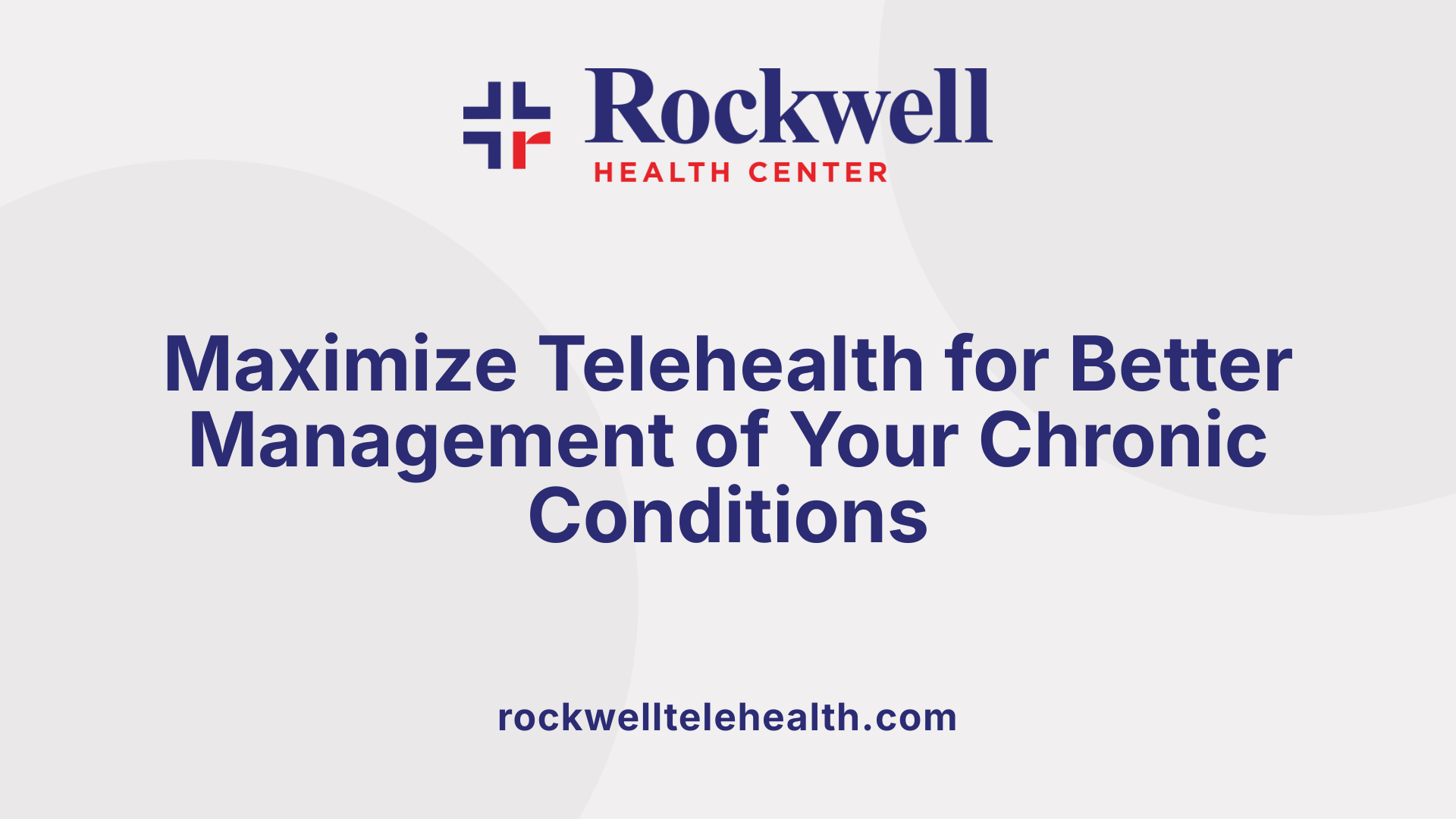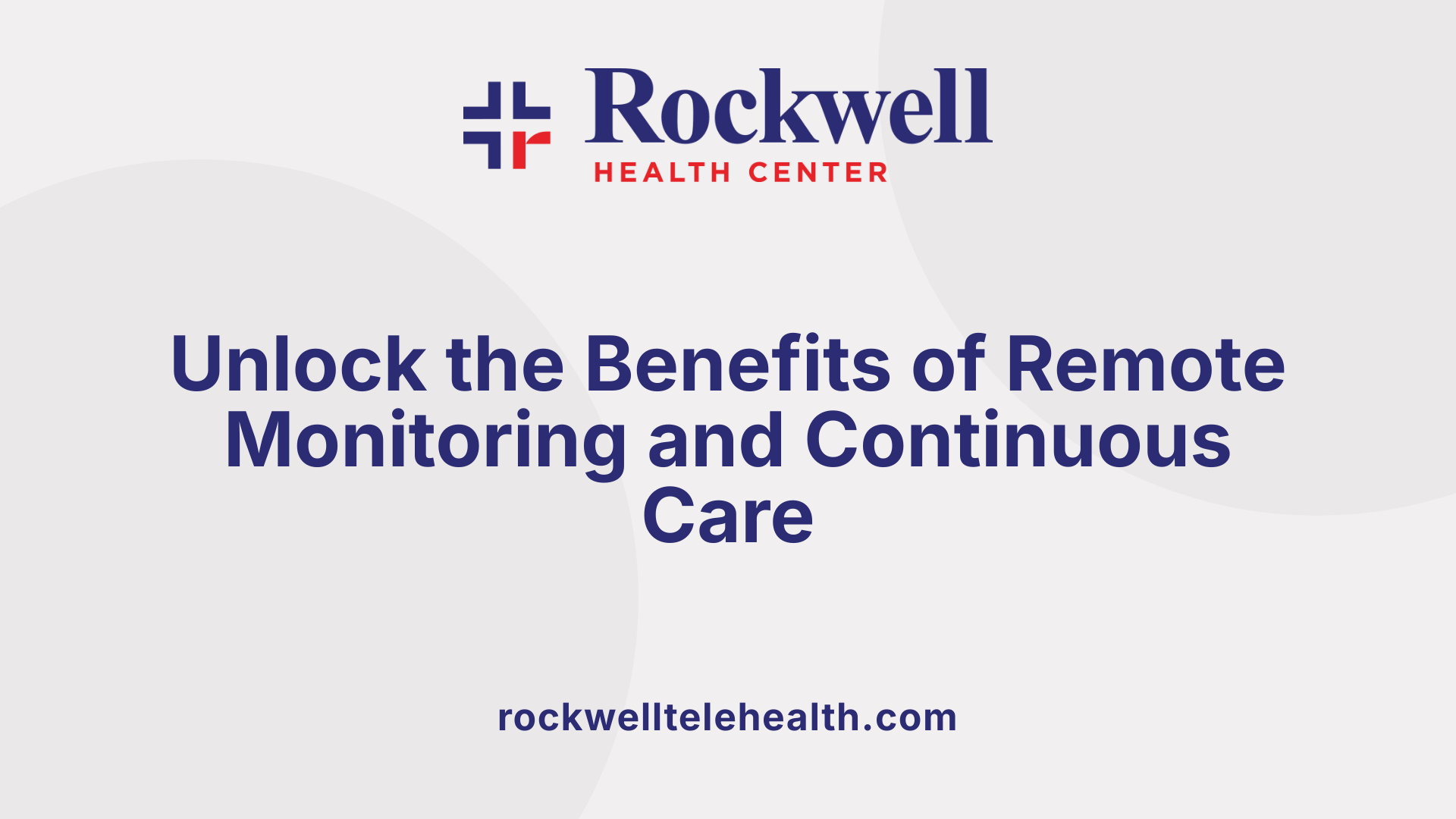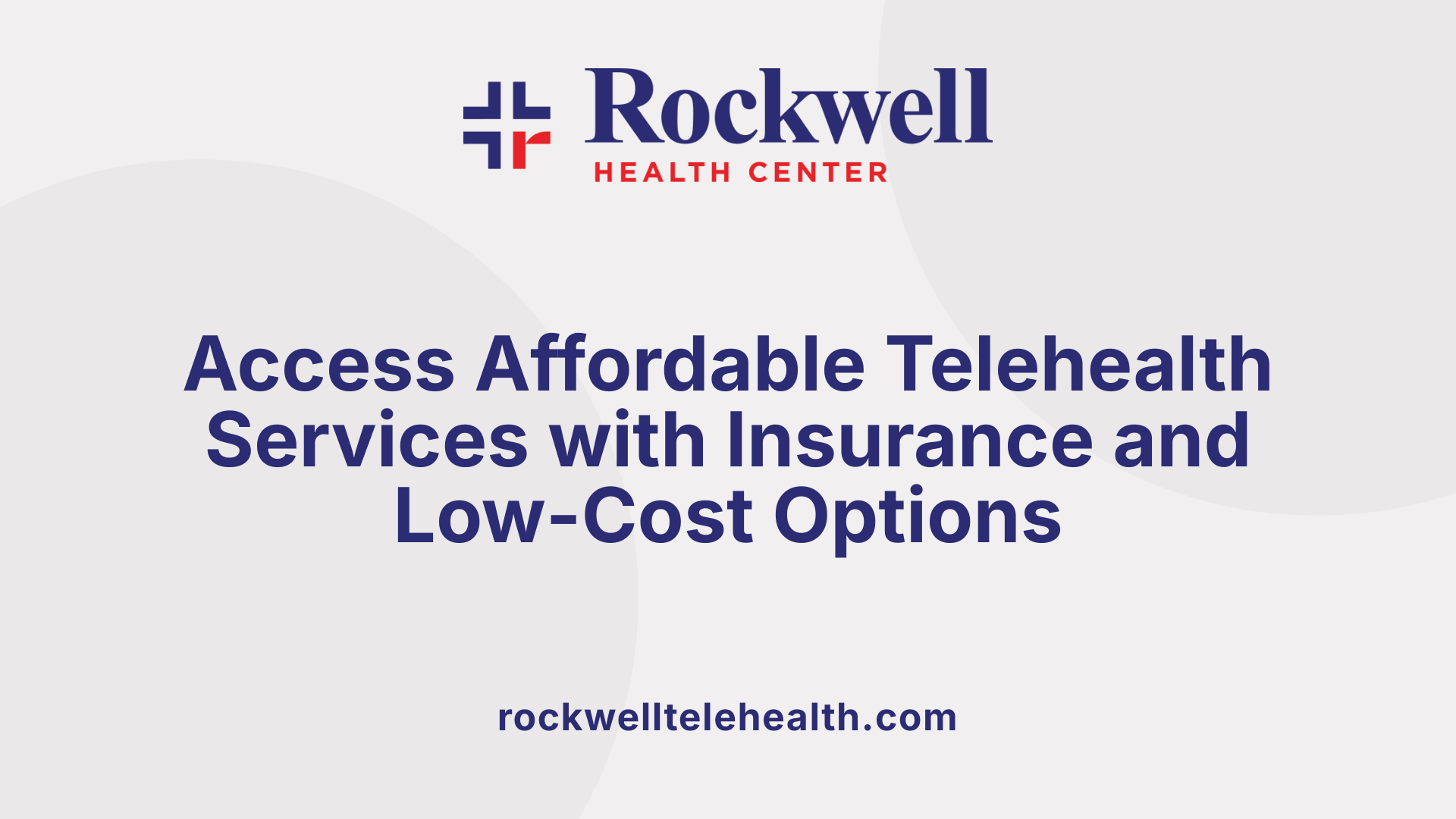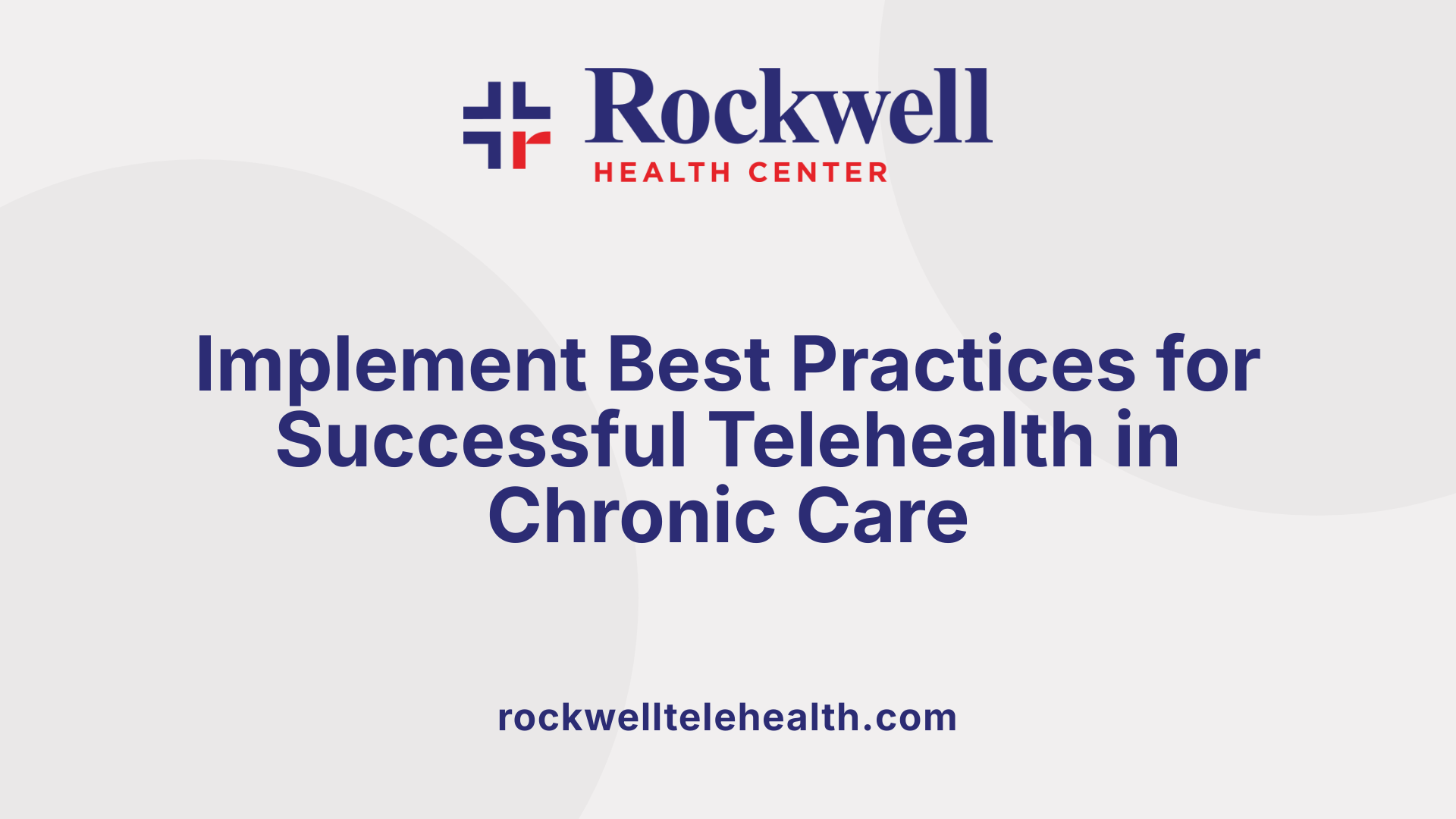Unlocking Accessible and Affordable Care for Chronic Conditions
The evolution of telehealth has transformed how healthcare is delivered, especially for individuals managing chronic health conditions. With the advent of innovative telehealth platforms, patients now have access to continuous, quality care that is not only effective but also affordable. This article explores how telehealth can be leveraged to improve health outcomes, the evidence supporting its use, best practices for implementation, and available resources to ensure equitable access across diverse populations.
Using Telehealth Effectively for Chronic Conditions

How can telehealth be used effectively to manage chronic conditions?
Telehealth has become an essential tool in managing chronic illnesses like heart disease, diabetes, and COPD. Its effectiveness lies in its ability to provide continuous, accessible, and personalized care. One of its main strengths is remote patient monitoring, where devices such as blood pressure cuffs, blood sugar meters, and pulse oximeters track vital signs in real-time. This data allows healthcare providers to monitor a patient's condition closely and make timely adjustments to treatment plans.
Virtual consultations, including live video appointments and asynchronous messaging, enhance communication between patients and providers. These scheduled videoconferences facilitate regular follow-ups, medication management, and patient education. Asynchronous tools, like secure messaging, enable patients to share updates and ask questions without needing a real-time appointment, increasing convenience and engagement.
Support tools play a vital role as well. Text messaging services remind patients to take medications, stay active, or monitor health metrics. Web-based applications and interactive platforms help patients set goals, track progress, and understand their health better. These tools empower patients by fostering self-management and encouraging healthier behaviors.
Integrating telehealth with in-person care creates a seamless continuum that enhances treatment adherence and outcomes. Telehealth reduces barriers like transportation and scheduling conflicts, making healthcare more accessible, especially for rural and underserved populations.
Research indicates that telehealth is as effective, if not more so, than traditional face-to-face visits for managing chronic diseases. Studies show improvements in clinical outcomes, such as blood pressure and blood sugar control, along with reductions in hospitalizations and emergency visits. Moreover, telehealth can lower healthcare costs and improve quality of life for patients.
In summary, a strategic combination of remote monitoring, virtual consultations, digital support tools, and integration with traditional care maximizes the benefits of telehealth for chronic condition management. Patients can enjoy better health outcomes, increased confidence in managing their health, and greater convenience—all vital for long-term health success.
The Benefits of Telehealth in Managing Chronic Diseases

What benefits do telehealth services provide in managing chronic health issues?
Telehealth has become an essential component in managing chronic diseases like diabetes, hypertension, and heart failure. It improves access to healthcare providers, especially for people in rural or underserved areas where in-person care may be limited or difficult to reach.
Through remote monitoring devices—such as blood pressure cuffs, blood sugar meters, and pulse oximeters—patients can regularly track their health metrics. These devices transmit real-time data to healthcare providers, allowing for timely adjustments to treatment plans and medication management.
Additionally, telehealth promotes better medication adherence. Patients receive virtual education and medication reminders through apps and messaging, which help sustain consistent treatment routines. Family involvement is often encouraged, further supporting patient adherence and understanding.
The platform's various tools—video consultations, secure messaging, and remote health data transmission—facilitate comprehensive, ongoing patient-provider communication. This continuous engagement leads to improved health outcomes, better disease control, and reduced emergency visits.
Another significant benefit is the reduction in healthcare costs and hospitalizations. Telehealth cuts down on transportation expenses and time off work for patients, and by catching issues early through regular monitoring, it minimizes the likelihood of severe health complications.
Crucially, during public health emergencies like the COVID-19 pandemic, telehealth ensures patients can maintain regular care without exposure risks. It supports continuous, high-quality management of chronic conditions even when in-person visits are restricted.
Overall, telehealth empowers patients with tools and access needed for effective self-management. It enhances engagement, boosts confidence in managing their health, and leads to more coordinated, patient-centered care outcomes.
Affordable Telehealth Options and Platforms
 Several platforms now make managing chronic diseases more accessible and affordable for patients. Notable options include Doctor On Demand, GoodRx Care, and other low-cost or insurance-covered services. These platforms facilitate virtual visits, online prescriptions, mental health support, and ongoing chronic condition management.
Several platforms now make managing chronic diseases more accessible and affordable for patients. Notable options include Doctor On Demand, GoodRx Care, and other low-cost or insurance-covered services. These platforms facilitate virtual visits, online prescriptions, mental health support, and ongoing chronic condition management.
For insured patients, many telehealth services accept most insurance plans, which often cover the costs, leaving some visits free or at minimal out-of-pocket expense. For those without insurance, platforms like Doctor On Demand offer economical rates—around $99 for general medical consultations and approximately $134 for mental health services. Some apps, such as GoodRx Care, also provide low-cost visits and same-day prescriptions for certain conditions.
Most telehealth providers operate around the clock, offering 24/7 access for urgent, non-urgent, and ongoing care needs. This continuous availability ensures patients with conditions like high blood pressure, diabetes, or mental health concerns can receive support whenever they need it.
These services are particularly beneficial for chronic disease management, enabling regular check-ins, remote monitoring, and seamless communication with healthcare providers. They support various treatment aspects, including medication adherence, lifestyle counseling, and mental health therapy, making healthcare more convenient, cost-effective, and accessible for diverse populations.
Evidence Supporting Telehealth's Effectiveness in Chronic Disease Care
Research studies and systematic reviews provide strong support for the use of telehealth in managing chronic diseases. These studies demonstrate that telehealth interventions can lead to significant improvements in clinical outcomes, including reductions in blood pressure, blood sugar levels, and hospitalization rates.
For example, systematic reviews have shown that telemonitoring and remote consultations help lower systolic blood pressure and improve glycemic control in patients with hypertension and diabetes. Telehealth methods such as regular text reminders, web-based education, and real-time remote monitoring enable better medication adherence and empower patients to manage their health actively.
Meta-analyses indicate that telehealth not only enhances health metrics but also reduces hospitalizations and emergency department visits. These improvements are especially notable among vulnerable populations, including rural residents and those with complex health needs.
Overall, scientific evidence underscores telehealth as a safe, effective, and accessible approach to chronic disease management, with benefits such as improved health status, increased patient engagement, and reduced healthcare costs.
Best Practices and Strategies for Effective Telehealth in Chronic Disease Management

What are best practices for utilizing telehealth to improve health outcomes for chronic diseases?
Implementing effective telehealth strategies for managing chronic conditions involves multiple approaches. First, healthcare providers should develop personalized care plans tailored to each patient's unique health needs and lifestyle preferences. These plans help ensure that interventions are relevant and increase patient engagement.
Regular virtual check-ins are essential. Scheduling consistent appointments allows for monitoring disease progress and promptly addressing any issues that arise. Remote patient monitoring devices, such as blood pressure monitors, blood sugar meters, and weight scales, facilitate ongoing data collection. This real-time information enables providers to intervene early and adjust treatments as necessary.
Using a mix of telehealth modalities improves overall care quality. Live video visits support direct communication, while asynchronous tools like secure messaging or sharing test results keep patients connected between appointments. Mobile health (mHealth) applications can assist with medication reminders, dietary goals, and tracking symptoms.
Maintaining patient privacy and security is critical. Ensuring compliance with HIPAA regulations fosters trust and encourages participation. Providing education tailored to individual health literacy levels also enhances understanding and adherence.
Lastly, collaboration among multidisciplinary teams—doctors, nurses, mental health professionals, and therapists—through integrated telehealth platforms helps coordinate care and optimize health outcomes. This comprehensive approach reduces hospitalizations and promotes better disease control.
Transforming Healthcare—Affordable and Accessible Chronic Disease Management
The integration of telehealth into chronic disease management represents a significant advancement in healthcare delivery. It offers a cost-effective, accessible, and effective approach to improving patient outcomes, reducing hospitalizations, and lowering overall healthcare costs. With the continued expansion of telehealth platforms and targeted efforts to address disparities, patients across diverse populations can benefit from continuous, high-quality care that fits their lifestyles. Embracing best practices and leveraging available resources will ensure that telehealth remains a cornerstone of effective chronic disease management today and into the future.
References
- Doctor On Demand® Telehealth: 24-Hour Online Doctor
- How can I use telehealth to manage chronic conditions?
- Telehealth for Chronic Disease Management Among ...
- 10 Doctor-Recommended Telehealth Apps
- Telehealth Basics - ATA
- The effectiveness of telemedicine in the management ...
- Managing Chronic Disease with Telerehabilitation
- Telehealth Interventions to Improve Chronic Disease
- Managing chronic conditions through telehealth
























































































.png)